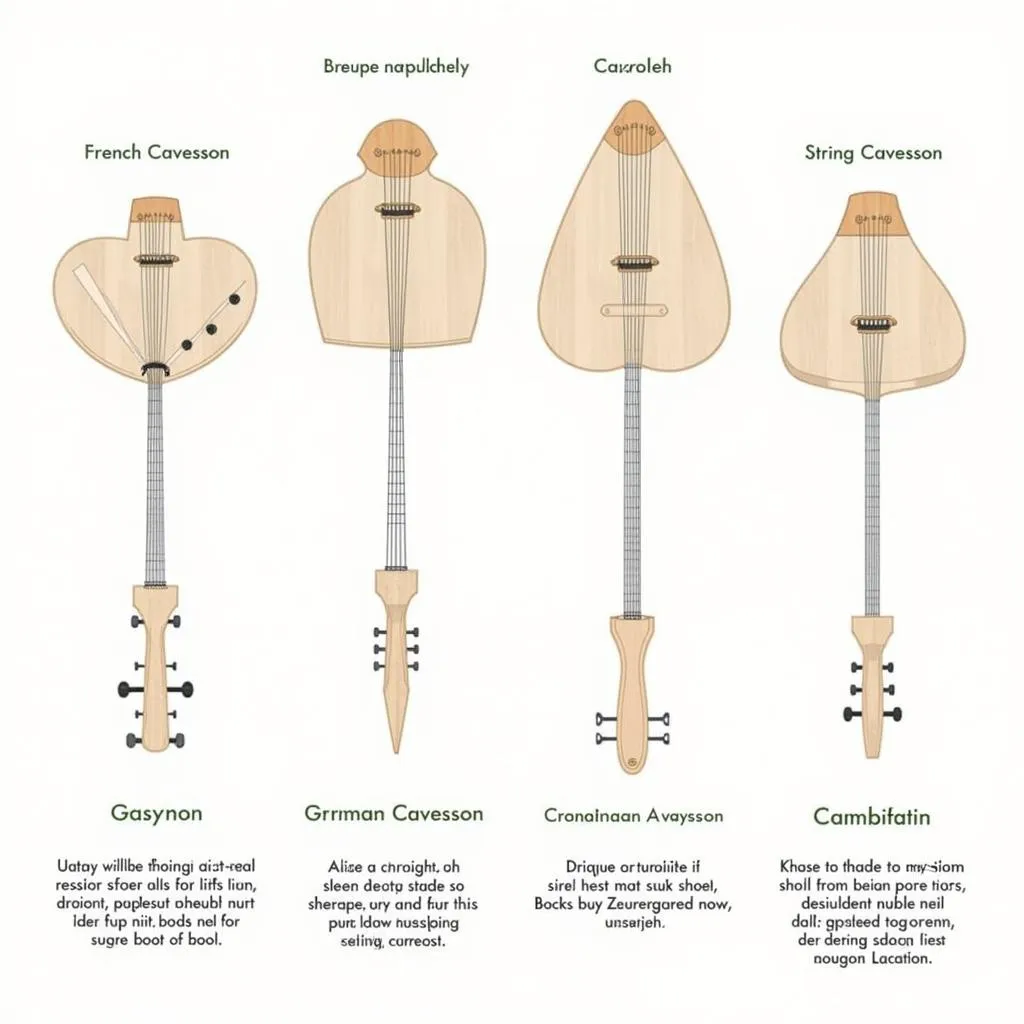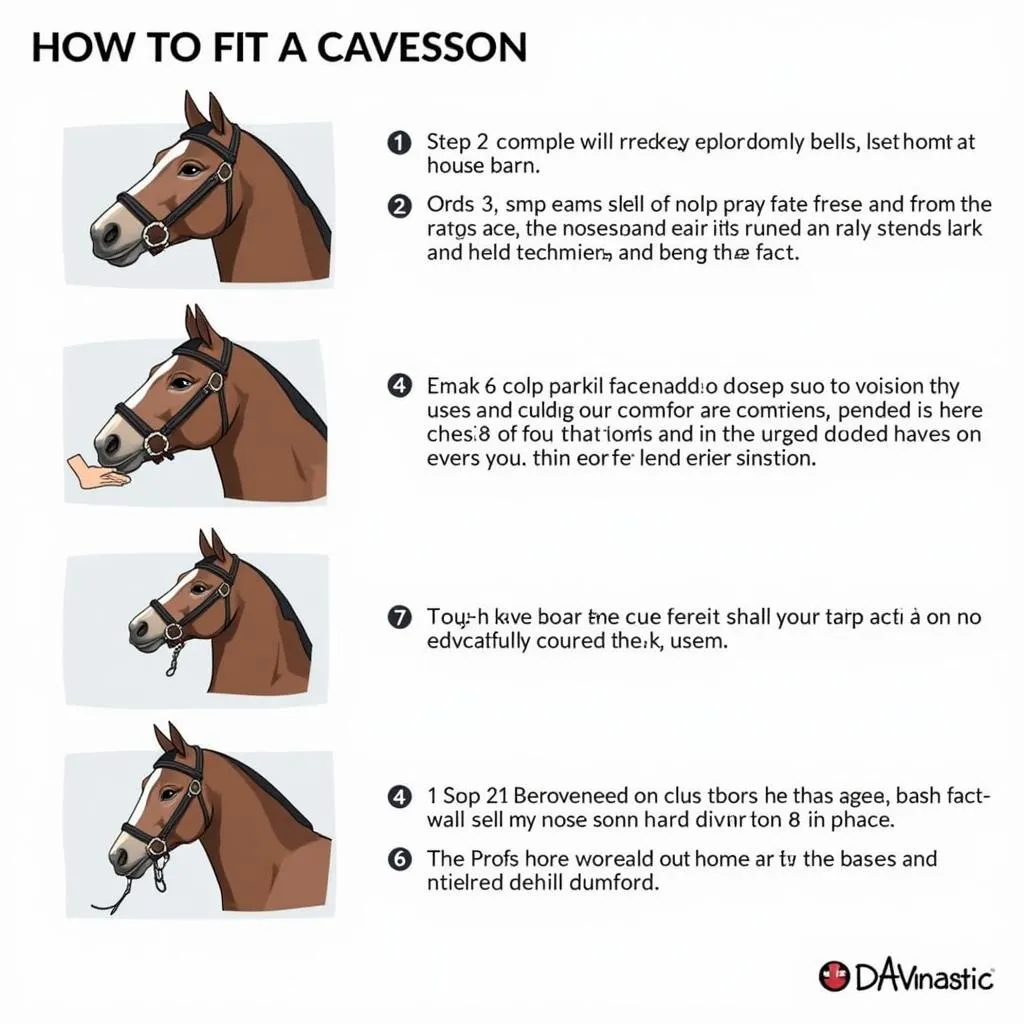A cavesson, a piece of equipment often seen in the horse world, can cause confusion for new horse owners. It resembles a halter but serves a different purpose. This comprehensive guide will delve into the intricacies of cavessons for horses, providing you with all the information you need to make informed decisions for your equine companion.
Understanding the Cavesson: More Than Just a Halter
While a halter primarily aids in handling and leading a horse, a cavesson is primarily a training tool. It sits higher on the horse’s face, typically above the nostrils, and features a noseband made of metal, leather, or rope.
The key distinguishing feature of a cavesson is the metal rings attached to its noseband. These rings serve as attachment points for training aids, such as lungeing reins or side reins, allowing for precise communication and control during training sessions.
 Horse Wearing Leather Cavesson
Horse Wearing Leather Cavesson
Different Types of Cavessons: Choosing the Right Fit
Various types of cavessons cater to different training needs and disciplines.
- French Cavesson: This popular choice features a heavy, padded noseband and is commonly used in dressage training. Its design encourages the horse to soften to the bit and develop proper head carriage.
- German Cavesson: Similar to the French cavesson, the German version typically has a lighter, less padded noseband. It is versatile for various training activities, including lungeing and riding.
- String Cavesson: Made from a simple rope or cord, the string cavesson is lightweight and minimalist. It is often used for groundwork and starting young horses.
- Combination Cavesson: As the name suggests, this cavesson combines features of different types. It might have a padded noseband like a French cavesson but with additional rings or adjustments found in other types.
 Types of Cavessons for Horses
Types of Cavessons for Horses
When and Why Use a Cavesson for Horses?
Cavessons are valuable tools for various training purposes:
- Lungeing: A cavesson allows you to lunge your horse without a bit, encouraging freedom of movement and helping to develop balance and rhythm.
- Developing Head Carriage: By using a cavesson with side reins or other training aids, you can encourage your horse to soften at the poll and maintain a consistent head position.
- Groundwork: Cavessons can enhance communication during groundwork exercises, refining cues and improving responsiveness.
- Starting Young Horses: The cavesson provides a gentle introduction to pressure and control for young horses before introducing the bit.
Fitting a Cavesson: Ensuring Comfort and Safety
A properly fitted cavesson is crucial for your horse’s comfort and safety. It should sit high on the face, approximately two fingers’ width below the cheekbone. The noseband should be adjusted snugly but not overly tight, allowing for two fingers to fit comfortably between the noseband and the horse’s face.
 Correct Cavesson Fit
Correct Cavesson Fit
Using a Cavesson Responsibly: Patience and Understanding
Like any training tool, using a cavesson requires patience, understanding, and proper technique. Avoid harsh or sudden movements that could startle or injure your horse.
Work with a qualified trainer to learn how to use a cavesson effectively and ethically. They can help you choose the right type of cavesson for your horse, ensure a proper fit, and guide you in using it to achieve your training goals while prioritizing your horse’s well-being.
Conclusion
A Cavesson For Horses, while often mistaken for a halter, is a valuable training tool with a distinct purpose. Understanding the different types of cavessons, their uses, and how to fit them correctly can significantly benefit your horse’s training journey. By prioritizing responsible and ethical training practices, you can establish clear communication and build a strong partnership with your equine companion.
Do you have any experiences using cavessons with your horses? Share your insights and questions in the comments below!
Frequently Asked Questions:
Q: Can I leave a cavesson on my horse all the time?
A: No, cavessons are not designed for everyday use like halters. They should only be used during training sessions and then removed.
Q: Is a cavesson suitable for all horses?
A: While cavessons can be helpful training tools, they might not be appropriate for every horse. Consult with a qualified trainer to determine if a cavesson is suitable for your horse’s age, temperament, and training level.
Q: What are the signs of a poorly fitted cavesson?
A: Look for signs of discomfort, such as rubbing, head tossing, or resistance. If the cavesson leaves marks on your horse’s face, it’s too tight.
Q: Can I use a cavesson for riding?
A: While some cavessons have rings that can accommodate reins, it’s generally recommended to use a bit and bridle for riding.
Q: How do I clean and care for a cavesson?
A: Regularly check your cavesson for wear and tear. Clean it with saddle soap and leather conditioner as needed.
Need More Help?
We’re here to support you and your horse every step of the way. Contact us at Phone Number: 0772127271, Email: [email protected] or visit us at QGM2+WX2, Vị Trung, Vị Thuỷ, Hậu Giang, Việt Nam. Our dedicated customer support team is available 24/7 to answer your questions and provide expert guidance.
Explore our website for more insightful articles on horse care, training, and equipment!